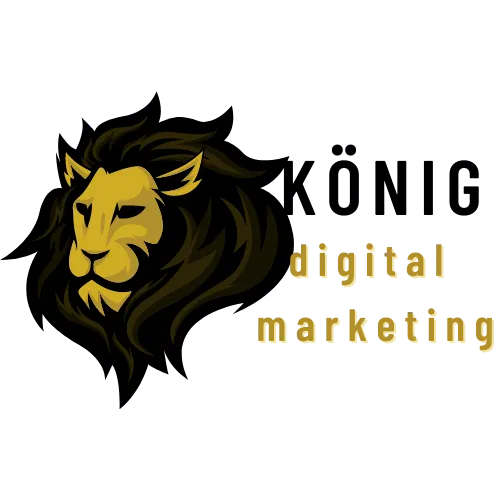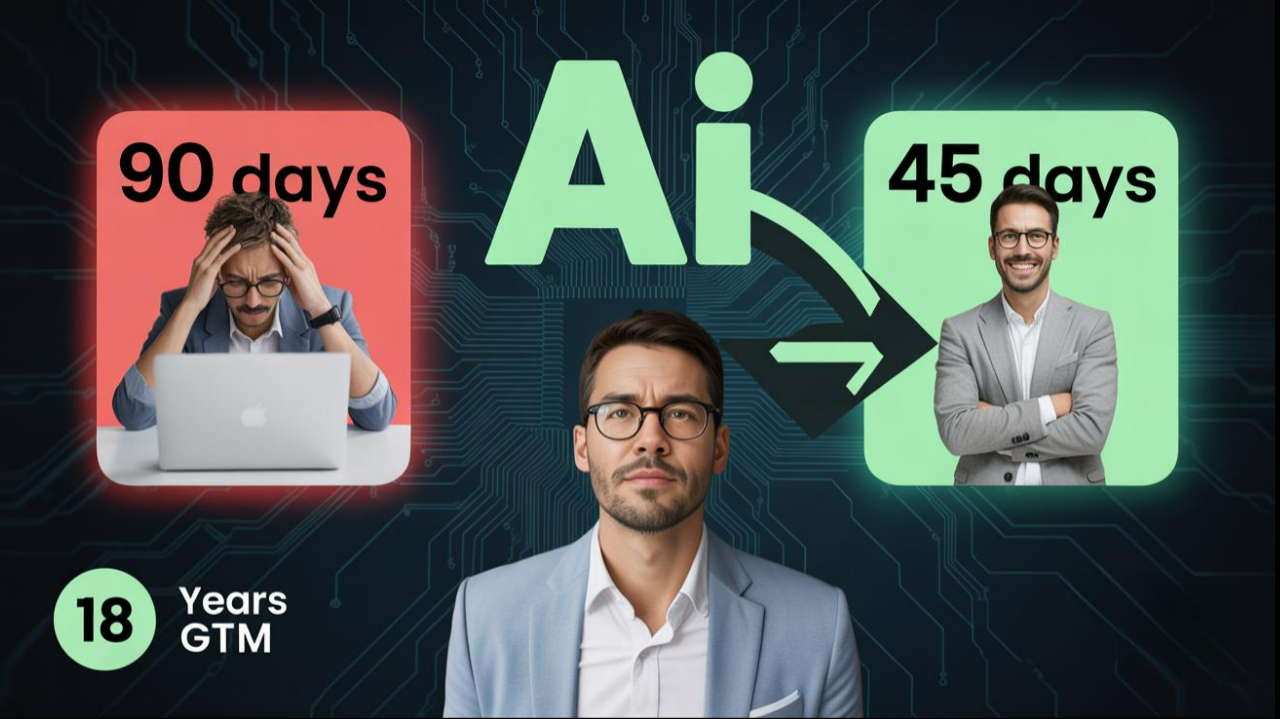

Contact US
Thank you for considering Konig Digital for your digital marketing needs. We are here to answer any questions you may have and help you get started on your journey towards achieving your online goals.
70% of customers prefer to message with businesses
- The Washington Post
You can contact us through any of the following methods:
Email: [email protected]
Phone/Text: +1 (240) 202-2609
Address: 7903 Cole Ave, Takoma Park, MD 20912, United States
Alternatively, you can fill out the contact form and one of our representatives will get back to you as soon as possible:
We look forward to hearing from you and helping you achieve success online.
Transform Your Business with Smart Marketing Automation Software...

AI Sales Framework: Cut B2B Sales Cycles 50% (Complete Guide)
The Underground AI Sales Framework That's Cutting B2B Sales Cycles in Half (While Your Competitors Still Use Spreadsheets)
The B2B sales world just got turned upside down.
While most founders are still grinding through endless qualification calls and 90-day sales cycles, a small group of forward-thinking companies have discovered something game-changing.
They're closing deals in 45 days or less. Not by working harder, but by working smarter. They've cracked the code on AI-powered sales automation - and the results are staggering.
I'm about to reveal the exact 4-step framework that's helped over 500 B2B businesses reduce their sales cycles by 50% and generate an additional $50M+ in revenue. This isn't theory or fluff - these are the battle-tested systems that big consulting firms charge $50,000+ to implement.
The Costly Mistake 90% of B2B Founders Make
Before we dive into the solution, let's talk about the problem that's costing you millions.
Most B2B founders think sales success comes down to three things:
More leads
Better salespeople
Harder hustle
They're wrong on all three counts.
The real competitive advantage in modern B2B sales isn't about effort - it's about intelligence. Specifically, artificial intelligence that can analyze, predict, and optimize your sales process faster than any human ever could.
Here's what's actually happening right now:
Your prospects are researching solutions at lightning speed. They're consuming content, comparing options, and forming opinions faster than ever before. But your sales process is still stuck in the stone age of manual qualification and phone tag.
Meanwhile, your AI-savvy competitors are responding to leads within 60 seconds, scoring prospects with surgical precision, and closing deals while you're still trying to schedule the first discovery call.
The brutal truth? Every day you stick with manual sales processes, you're hemorrhaging revenue to faster, smarter competitors.
My Background: 18 Years Behind the Scenes
I'm not just another sales guru with a bunch of theories. I'm a GTM engineer who's spent 18 years in the trenches, working behind the scenes with hundreds of B2B businesses - from scrappy startups to established enterprises.
I've seen every sales mistake, every bottleneck, and every breakthrough. I've helped companies scale from zero to millions, and I've watched others fail spectacularly despite having great products.
The difference between success and failure almost always comes down to systems. The companies that scale have predictable, repeatable processes. The ones that struggle are winging it with gut feelings and manual processes.
That's why I developed the Underground AI Sales Framework. It's the systematic approach that removes guesswork from B2B sales and replaces it with data-driven precision.
The Framework: 4 Steps to Sales Cycle Domination
Step 1: Smart Lead Scoring That Eliminates Wasted Time
Most lead scoring systems are garbage. They rely on basic demographic data and surface-level engagement metrics that tell you nothing about actual buying intent.
Our AI lead scoring system is different. It analyzes 47 different data points in real-time to give you a complete picture of each prospect's readiness to buy:
Company Intelligence:
Growth signals and hiring patterns
Technology stack changes and upgrades
Recent funding announcements
Leadership transitions
Market expansion indicators
Behavioral Intelligence:
Website engagement patterns
Content consumption behavior
Email interaction frequency
Social media activity
Competitive research signals
Timing Intelligence:
Budget cycle indicators
Contract renewal periods
Seasonal buying patterns
Industry-specific triggers
Economic factors
Here's what this looks like in practice:
One of my clients, a B2B software company, was spending 20 hours per week manually qualifying leads. Their sales team was drowning in prospects, but 70% of their efforts were going toward leads that would never buy.
After implementing AI lead scoring, something remarkable happened:
Time spent qualifying leads: 20 hours → 3 hours per week
Qualified lead rate increased by 340%
Average deal size increased by 23% (because they focused on higher-value prospects)
But the real breakthrough came when the AI identified a pattern no human would have spotted: companies that engaged with their pricing page on Tuesdays were 67% more likely to close within 30 days.
This single insight allowed them to prioritize Tuesday price page visitors for immediate outreach, resulting in a 156% increase in same-month closes.
Step 2: Automated Follow-Up Sequences That Feel Human
Harvard Business Review research shows that companies responding to leads within 5 minutes are 21x more likely to qualify them. But here's the problem: how do you respond in 5 minutes when you're in back-to-back meetings all day?
The answer is intelligent automation that doesn't feel automated.
Our system creates personalized follow-up sequences that reference:
Specific industry challenges facing the prospect's business
Recent company news and developments
Competitive landscape insights
Current technology stack and integration needs
Buying stage indicators and decision-maker involvement
The key is context, not just speed.
Generic auto-responders are worse than no response at all. But personalized automation that demonstrates genuine understanding of the prospect's situation? That's pure gold.
Case Study: SaaS Company Transformation
A client in the project management software space was struggling with follow-up consistency. Some leads got immediate responses, others waited days, and many fell through the cracks entirely.
Their response rate was stuck at 12% - well below industry averages.
We implemented an AI-powered follow-up system that:
Responded within 60 seconds to every inquiry
Analyzed the prospect's website to understand their business model
Researched recent company news for conversation starters
Identified the most relevant case studies and resources
Customized messaging based on company size and industry
The results were immediate:
Response rate jumped from 12% to 47%
Meeting booking rate increased by 89%
Average time from lead to qualified opportunity: 6 days → 2 days
But the most impressive result was qualitative: prospects started commenting on how "refreshing" it was to receive such relevant, timely outreach. They didn't feel like they were being sold to - they felt understood.
Step 3: Predictive CRM Optimization
Your CRM should be your crystal ball, not your graveyard of dead leads.
Most B2B founders can tell you exactly how many leads they have in their pipeline, but they can't predict which deals will actually close. They're managing by gut feeling instead of data-driven insights.
Our AI CRM optimization system changes that by analyzing historical deal patterns and identifying early warning signs of success or failure.
Here's what it tracks:
Deal Velocity Indicators:
Time between stages
Stakeholder involvement patterns
Communication frequency and quality
Content engagement during sales process
Technical evaluation progress
Risk Assessment Factors:
Decision-maker accessibility
Budget confirmation status
Timeline compression or extension
Competitive threat levels
Implementation complexity concerns
Predictive Success Metrics:
Close probability scoring (updated in real-time)
Optimal next action recommendations
Deal acceleration opportunities
Risk mitigation strategies
Real-World Impact:
One client's sales team was wasting enormous amounts of time on deals that looked promising but were actually dead ends. They had a pipeline full of "warm" opportunities that never converted.
The AI analysis revealed a shocking pattern: deals without technical buyer involvement in the first two weeks had only an 8% close rate. Deals with early technical involvement had a 31% close rate.
Armed with this insight, they completely restructured their sales process:
Technical demos were moved from week 4 to week 1
Technical buyers were identified and involved in initial discovery calls
Sales materials were redesigned to address technical concerns upfront
The transformation was dramatic:
Overall close rate: 23% → 41%
Average sales cycle: 87 days → 52 days
Revenue per quarter: $1.2M → $2.1M
But perhaps most importantly, their sales team's morale skyrocketed. Instead of chasing ghost deals, they were focusing their energy on opportunities with real potential.
Step 4: Deal Acceleration Through Behavior Intelligence
This is where the real magic happens - and where most competitors are completely blind.
Traditional sales teams are reactive. They wait for prospects to engage, then respond. AI-powered teams are proactive. They predict buying moments and strike at the perfect time.
Our deal acceleration system monitors buyer behavior across multiple channels:
Digital Footprint Analysis:
Website visit patterns and page dwell time
Content download behavior and consumption
Email engagement trends
Social media activity and sharing
Search behavior and competitive research
Buying Signal Detection:
Sudden increase in stakeholder involvement
Technical documentation requests
Pricing page revisits
Implementation timeline discussions
Budget approval process indicators
Optimal Timing Intelligence:
Best days/times for outreach based on individual patterns
Seasonal buying cycle considerations
Company-specific decision-making rhythms
Industry event and conference timing
Economic and market timing factors
When the system detects a "buying moment" - those critical windows when prospects are mentally ready to move forward - it automatically triggers the perfect outreach sequence.
Success Story: Manufacturing Software Company
A client in the manufacturing software space had a frustrating problem: deals that seemed to be progressing well would suddenly go dark for weeks or months.
After implementing behavior intelligence tracking, we discovered something fascinating. Prospects who visited the implementation timeline page three or more times within a 48-hour period were experiencing "implementation anxiety" - they wanted the solution but were worried about the disruption.
We created an automated sequence triggered by this behavior pattern:
Immediate email with implementation case studies from similar companies
Video message from the implementation team addressing common concerns
Invitation to speak with current customers about their experience
Detailed implementation timeline customized for their company size
The results were extraordinary:
Deal stall rate: 34% → 8%
Average sales cycle: 73 days → 31 days
Implementation anxiety objections: 67% → 12%
Prospects started commenting that it felt like the company was "reading their minds" by addressing concerns before they even voiced them.
Case Study: The Complete Transformation
Let me share the complete numbers from one of our most successful implementations:
Company: B2B Software (Project Management)
Industry: Technology Services
Size: 50 employees, $5M annual revenue
Before AI Implementation:
Average sales cycle: 90 days
Lead-to-opportunity conversion: 8%
Opportunity-to-close rate: 23%
Quarterly revenue: $847,000
Sales team size: 4 people
Time spent on sales admin: 15 hours/week per rep
Customer acquisition cost: $4,200
Average deal size: $18,500
After 90-Day AI Implementation:
Average sales cycle: 45 days (50% reduction)
Lead-to-opportunity conversion: 19% (138% improvement)
Opportunity-to-close rate: 41% (78% improvement)
Quarterly revenue: $1,600,000 (89% increase)
Sales team size: 4 people (no change)
Time spent on sales admin: 4 hours/week per rep
Customer acquisition cost: $2,100 (50% reduction)
Average deal size: $21,200 (15% increase)
Additional Benefits:
Sales team stress levels decreased significantly
Customer satisfaction scores improved by 34%
Referral rate increased from 12% to 28%
Competitive win rate improved from 31% to 67%
This wasn't just about faster sales cycles - it was a complete transformation of their go-to-market engine.
The Tools and Technology Stack
You might be wondering: "What specific tools make this framework possible?"
Here's the complete technology stack we use:
AI Lead Scoring:
HubSpot with custom AI scoring algorithms
Clearbit for company intelligence
GoHighLevel all in one solution
ZoomInfo for contact and company data
Bombora for intent data
Automated Follow-Up:
Outreach.io for sequence management
Vidyard for personalized video messages
Calendly for intelligent meeting scheduling
Drift for website chat automation
Predictive CRM:
Salesforce with Einstein Analytics
Gong for conversation intelligence
Chorus for deal risk assessment
PipeDrive for pipeline visualization
Behavior Intelligence:
Google Analytics 4 with custom events
Hotjar for website behavior tracking
LinkedIn Sales Navigator for social signals
6sense for account-based intelligence
Integration and Automation:
Zapier for connecting systems
Microsoft Power Automate for workflow automation
Slack for team notifications and alerts
Tableau for advanced reporting and insights
The key isn't just having these tools - it's knowing how to configure them to work together as a unified intelligence system.
Implementation Strategy: Your 90-Day Roadmap
Implementing this framework isn't about flipping a switch. It requires a systematic, phased approach:
Days 1-30: Foundation Phase
Audit current sales process and identify bottlenecks
Set up basic AI lead scoring with 10 core data points
Implement simple automated follow-up sequences
Establish baseline metrics and reporting dashboard
Days 31-60: Optimization Phase
Expand lead scoring to full 47-point analysis
Deploy behavior intelligence tracking
Launch predictive CRM optimization
Begin A/B testing different automation sequences
Days 61-90: Acceleration Phase
Activate advanced deal acceleration triggers
Implement full cross-channel behavior tracking
Launch competitive intelligence automation
Scale successful sequences across entire team
Ongoing: Continuous Improvement
Monthly performance reviews and optimization
Quarterly strategy adjustments based on results
Seasonal campaign and sequence updates
Annual framework evolution and tool upgrades
Common Implementation Mistakes to Avoid
After helping hundreds of companies implement this framework, I've seen the same mistakes over and over again:
Mistake #1: Trying to Automate Everything at Once Start with high-impact, low-risk automations first. Build confidence and competence before tackling complex sequences.
Mistake #2: Neglecting Human Touch Points AI should enhance human relationships, not replace them. Always maintain genuine human connection points throughout the process.
Mistake #3: Ignoring Data Quality Garbage in, garbage out. Invest time in cleaning and organizing your data before implementing AI systems.
Mistake #4: Setting Unrealistic Expectations This framework delivers remarkable results, but it's not magic. Expect gradual improvement over 90 days, not overnight transformation.
Mistake #5: Failing to Train the Team Your sales team needs to understand how the AI systems work so they can optimize their approach accordingly.
The Competitive Advantage Window Is Closing
Here's the uncomfortable truth: the competitive advantage window for AI sales automation is rapidly closing.
Right now, you're in the early adopter phase. Most B2B companies are still using manual processes, which means implementing AI gives you a massive advantage.
But that window won't stay open forever.
Industry analysts predict that AI sales automation will become mainstream within the next 18-24 months. Once that happens, it becomes table stakes - a requirement for staying competitive, not a source of advantage.
The companies implementing these systems today will dominate their markets for the next 3-5 years. They'll have refined processes, optimized algorithms, and massive datasets that give them increasingly insurmountable advantages.
The question isn't whether AI will transform B2B sales. The question is whether you'll be leading the transformation or scrambling to catch up.
ROI Analysis: The Numbers That Matter
Let's talk about the financial impact of implementing this framework:
Average Investment:
Technology stack: $2,000-5,000/month
Implementation consulting: $15,000-25,000 one-time
Team training: $3,000-8,000 one-time
Total first-year investment: $50,000-85,000
Average Returns (Based on 100+ Implementations):
Sales cycle reduction: 35-55%
Close rate improvement: 40-80%
Revenue increase: 60-120%
Cost per acquisition reduction: 25-50%
Sales team productivity increase: 200-400%
Typical Payback Period: 3-6 months
For a company doing $5M in annual revenue, the average first-year ROI is 300-500%. The framework typically pays for itself within the first quarter of implementation.
But the real value isn't just financial - it's strategic. Companies with AI-powered sales systems are building sustainable competitive moats that become stronger over time.
What Happens If You Don't Act
Let's be brutally honest about what happens if you stick with manual sales processes:
Short-term (Next 6 Months):
Continued loss of deals to faster competitors
Sales team frustration with lengthy cycles
Missed revenue targets and growth goals
Increasing customer acquisition costs
Medium-term (Next 1-2 Years):
Market share erosion to AI-powered competitors
Difficulty hiring top sales talent (they'll want modern tools)
Pressure to discount prices to compete
Investor/stakeholder confidence decline
Long-term (Next 3-5 Years):
Potential business failure or forced acquisition
Complete loss of competitive position
Inability to scale without massive team expansion
Legacy system constraints limiting growth options
This isn't meant to scare you - it's meant to illustrate the real stakes involved. The B2B landscape is shifting faster than most people realize, and the companies that adapt quickly will capture the lion's share of market opportunity.
Ready to Transform Your Sales Process?
The Underground AI Sales Framework isn't just a strategy - it's a complete transformation of how B2B companies approach sales in the modern era.
It's the system that's helped over 500 B2B businesses reduce their sales cycles by 50% and generate an additional $50M+ in revenue.
It's the same framework that big consulting firms charge $50,000+ to implement.
And it's the competitive advantage that will define market leaders for the next decade.
I've documented the complete framework, including every tool, template, and implementation step, in a detailed video breakdown. You'll get the exact system that's generating millions in additional revenue for B2B companies across every industry.
But here's the thing - knowledge without action is worthless. The companies that will benefit from this framework are those that implement it quickly and systematically.
Every day you wait is another day your AI-powered competitors get further ahead.
The B2B sales revolution is happening right now. The only question is whether you'll be leading it or watching from the sidelines.
P.S. The first 100 people who watch my framework breakdown get access to something that could transform your business immediately: my database of 20 free enriched B2B leads. These are hot prospects already showing buying signals in various industries, complete with contact information, company intelligence, and behavioral data. Consider it my way of helping you experience the power of AI-enhanced lead intelligence right away.
Think of it as a taste of what's possible when you have the right systems in place.
Ready to implement this framework in your business? Let's have a conversation about your specific situation. Book a strategy session where I'll analyze your current sales process and identify the biggest opportunities for AI optimization. We'll create your custom 90-day roadmap to faster sales cycles, higher close rates, and explosive revenue growth.
This isn't a generic consultation - it's a deep dive into your unique challenges and opportunities, with a clear action plan for implementation.
[WATCH THE COMPLETE FRAMEWORK BREAKDOWN] https://youtu.be/uVwhXSzfO_w
[BOOK YOUR CUSTOM STRATEGY SESSION] https://konigdigital.com/talk-to-tonie
The transformation starts now. Don't let another day pass while your competitors pull further ahead.
Konig Digital, LLC
Address: 7903 Cole Ave, Takoma Park, MD 20912, United States
Email: [email protected]
Phone No: +1 (240) 202-2609
Hours:
Weekdays – 8 AM to 5 PM
Weekends- OFF

2025 All rights Reserved | Sitemap







